- Joined
- Aug 20, 2022
- Messages
- 17,151
- Points
- 113
‘I want to reclaim my skin’: Why these people are removing their tattoos
By Jacqui Palumbo, CNN10 minute read
Published 5:59 AM EDT, Tue April 8, 2025
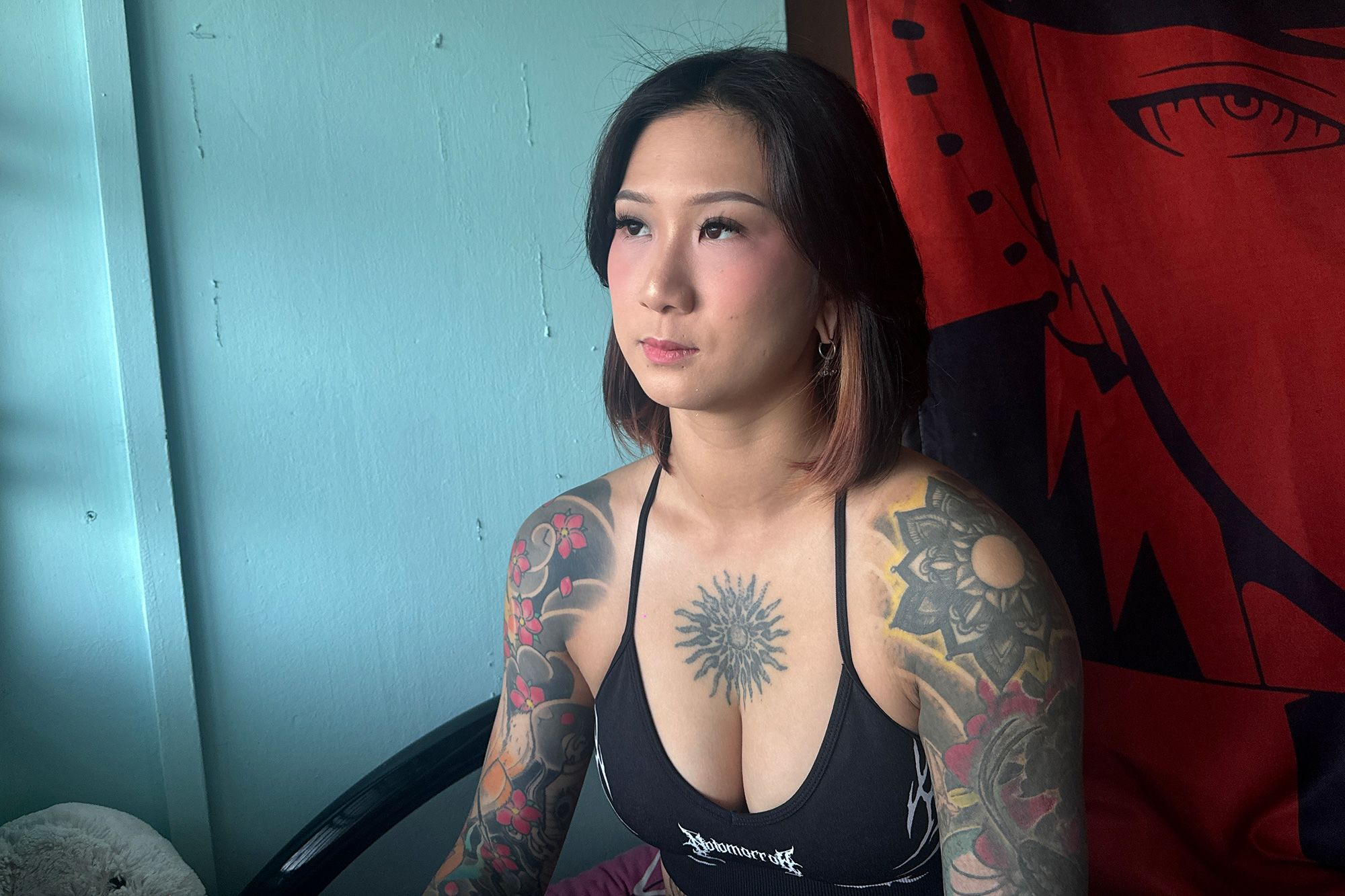
Jayne, who lives in Singapore, has begun removing around 70% of her tattoos and is documenting her laser treatments and aftercare online. The process will take years.
Laura Oliverio/CNN
CNN —
When Zach Gilyard, an art director in Brooklyn, got his first tattoo as a senior in high school, he did what most teenagers do and didn’t tell his parents. But not for the reasons you might think — Gilyard’s father and older siblings are all heavily tattooed, and Gilyard, like his mother, thought he would never join them. But on a whim 2006, he got a winged foot on his ankle to represent running, and kept it hidden around his family.
“It was not very me,” he said in a phone call, of getting inked. “I kind of liked that it was a bit of a thrill for me, because it was a time where I couldn’t control the situation. I was doing something permanent.”
Twelve years and several tattoos later, Gilyard abruptly decided to reverse course shortly after beginning a black-ink traditional patchwork sleeve on his left arm, starting with a panther head on his shoulder. It was big and bold, as intended, but left Gilyard feeling unsettled.
“I always had a bit of buyer’s remorse every time I got one. It would last a week or two, and then I’d be happy that I did it,” he said. But this time, the feeling didn’t subside. “I had it for maybe a month, and I freaked out about it — it sent me into a whole panic. I couldn’t explain why. I just didn’t want it, so I told myself in that moment that I was going to get rid of it.”
Roughly a quarter of people regret at least one of their tattoos, according to a 2023 Pew Research study surveying nearly 8,500 people in the US, as well as a smaller, separate study conducted in Turkey published the previous year. But it’s only fairly recently that tattoo removal has become more reliable and widely available. (This writer can attest to that; in 2008, she had a self-administered teenage stick-and-poke lasered off. It was an ordeal.)

Zach, who lives in New York, abandoned plans to start a traditional patchwork sleeve after beginning it with a bold panther head.
Courtesy Zach Gilyard
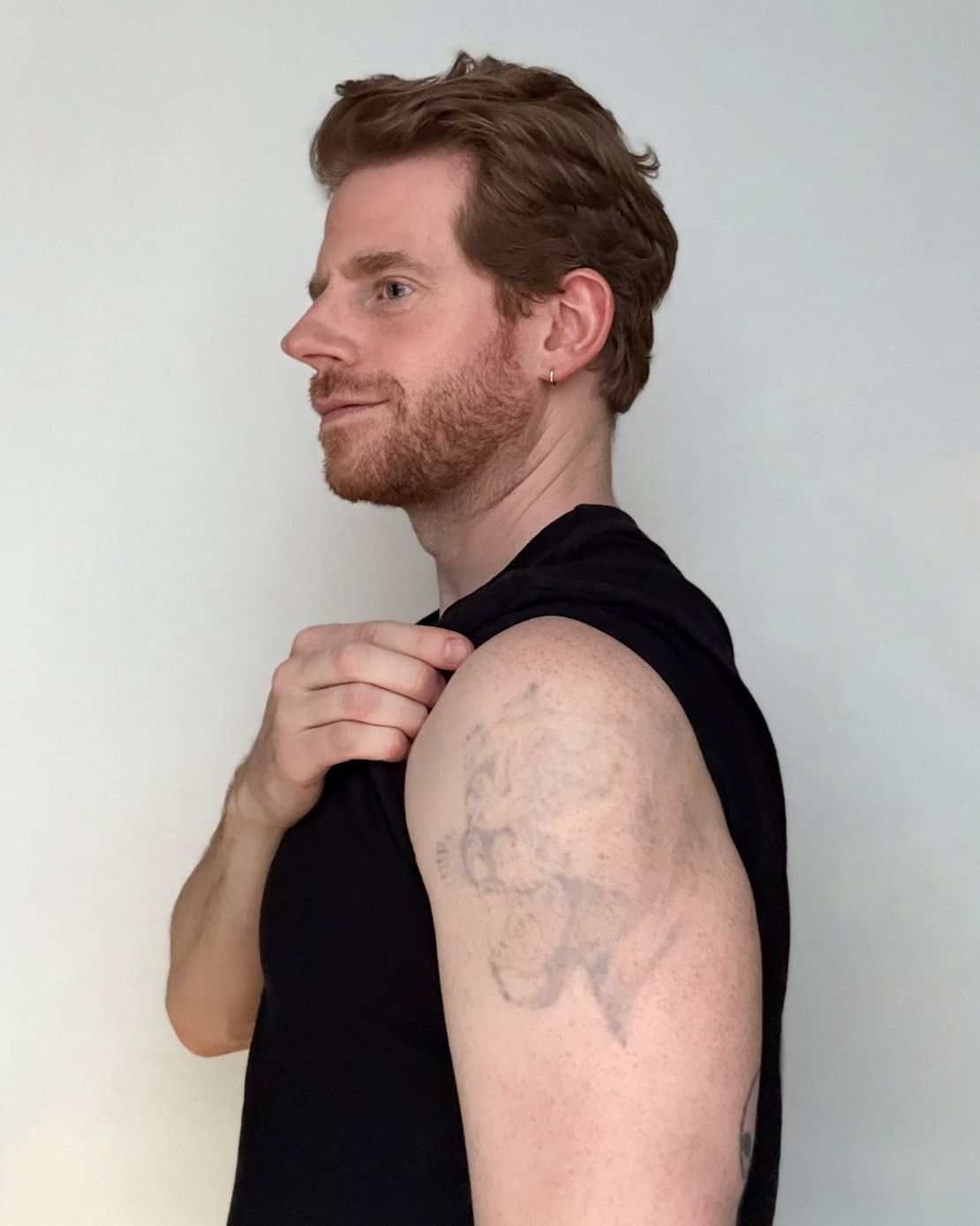
The panther head and several other tattoos are nearly gone, leaving only faded outlines.
Courtesy Zach Gilyard
Celebrities have often drawn attention for their disappearing ink: Angelina Jolie famously removed Billy Bob Thorton’s name after their divorce in 2003; Megan Fox lasered off her portrait of Marilyn Monroe; and Pharrell told British Vogue in 2008 he was trying an experimental alternative that involved growing new skin. Most recently, Pete Davidson appeared newly bare-chested in a Valentine’s Day campaign for Reformation while undergoing removals of some 200 tattoos, though paparazzi shots following the ad revealed he is still sporting lots of faded ink.
In Gilyard’s case, he wasn’t lasering hundreds of tattoos, but it has taken more than half a decade and several thousand dollars to remove a handful of them, including the stubborn, highly saturated panther head. Now, that’s nearly gone, showing only a ghostly impression against the freckles on his skin. Other, smaller designs are even further along and barely noticeable to him, he said.
“Results do vary, person to person, tattoo to tattoo,” said laser technician and tattoo artist Tim Goergen, who has been treating Gilyard at his shop, Gotham Tattoo Removal, in Brooklyn.


Courtesy Zach Gilyard/Gotham Tattoo Removal
Tattoo ink sits in the dermis layer, or second layer, of the skin permanently because ink molecules are “too big for the body to break down,” Goergen explained in a phone interview. Laser machines release fast pulses of energy that heat and break the ink down into tinier particles, triggering an immune response that processes them through the lymphatic system. (A recent study in Sweden has linked tattoos — and their removal — with an increased risk for lymphoma, though its authors said more research is needed.) Tattoos that are easier to remove are usually older, made of black ink, have finer lines, and sit closer to the heart where there’s better blood flow, he said.
Goergen charges between $100 and $450 for an individual session, while Removery, a national chain, cites $100-615 on its website. It’s difficult to predict how many sessions a client’s desired results will take, whether that’s fading a tattoo for a cover-up or complete removal, Goergen noted, “because everybody’s different.”
Amending ‘younger decisions’
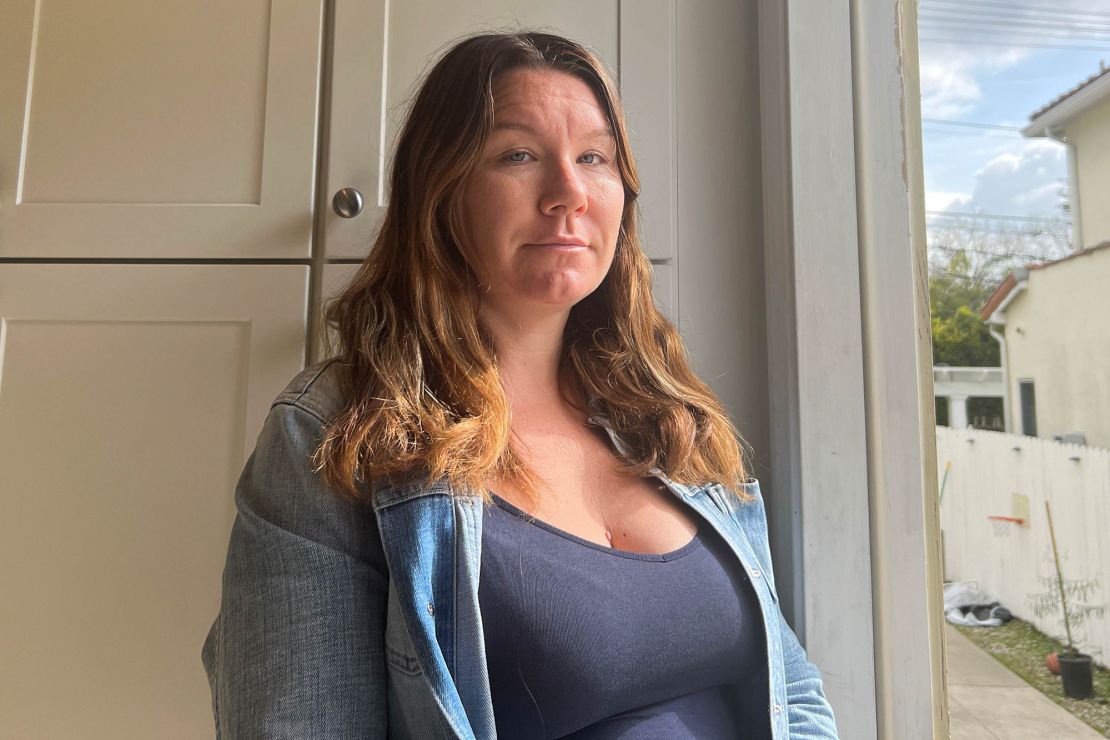
Sasha, at her home in Los Angeles, paused on laser treatments when she was pregnant, and hasn’t been eager to start up again.
Austin Steele/CNN
Why people remove their tattoos is often as idiosyncratic as why they get them. Sasha Goldbas-Nazarian, who lives in Los Angeles, decided to start laser treatments when she met her now-husband, who shares her Jewish faith but comes from a more conservative, Iranian family.
Interpretations of the Torah, as well as associations with the Holocaust, have led tattoos to long be considered forbidden or taboo within Judaism, though contemporary attitudes towards it have somewhat shifted. “When we first met, he didn’t believe that I was Jewish because I had tattoos,” Goldbas-Nazarian recalled with a laugh. “He was like, ‘I’ve never really met any Jews that have tattoos.’”
He eventually offered to pay to remove her most visible tattoos, which she said were “younger decisions” made when she was in high school and college, including a star on her ankle done — unprofessionally — by her friend with a tattoo machine; a horseshoe and star on her upper back; and the initials “UWS” for New York’s Upper West Side, where she grew up, on her wrist. (Disclosure: This writer is a childhood friend of Goldbas-Nazarian, and a former colleague of Gilyard).

She's had multiple rounds of laser treatment on three tattoos, but has yet to see much progress.
Austin Steele/CNN
Goldbas-Nazarian accepted, partly because her tattoos were faded and blurred and often invited questions, and partly because covering them with makeup for formal events had become a hassle during their relationship. But she didn’t anticipate how long it would take — or that it would be much more painful than getting tattooed in the first place, despite the fact that the laser sessions only last a handful of minutes each.
“Even though (the sessions are) fast, it’s still really painful. And you can smell your skin burning a little bit, which grossed me out,” she recalled. She’s gone for the treatments on and off for years but has had to pause for an extended period while pregnant, per the medical spa’s policies, and as a new mom. She has no desire to rush back, either. “Honestly, even though I still have a lot of sessions to do, I’ve been putting it off just because of how painful it is,” she said.
https://us.cnn.com/style/article/kate-peters-mastectomy-tattoos
Freckles gone wrong
Though tattooing might typically bring to mind large, custom artworks or small flash pieces, cosmetic tattoos have become popular for their ability to enhance facial features and makeup — a so-called “semi-permanent” option for people wanting to remove the daily hassle of filling in their eyebrows or adding beauty marks.But, cosmetic tattooing, which uses an alternative ink meant to produce a more natural finish on the skin, comes with its own set of challenges — as Z, who lives in the UK and prefers to go by her first initial to remain anonymous, discovered around three years ago. Her tattoos were tiny, resembling freckles across her forehead, nose and cheeks to replace natural ones she’d lost due to a rare side effect from a severe illness. She knew she would lose her hair during treatment, she said, but wasn’t aware that her complexion would drastically change.
“Growing up, I had a face full of freckles — my nickname was actually ‘Freckles,’” Z said in a phone interview. “Then I got quite poorly, and basically my freckles and all my moles faded away. And so when I was well again, I felt really weird about my face, because it felt so bare.”
After she came across a YouTube video of cosmetic freckle tattooing, she thought she would be able to get her freckles back. “But it went very wrong for me,” she said, explaining that the results didn’t feel natural. “You could tell that they were drawn on.” Unpleased with the outcome, she would cover them with makeup, but they still showed through.
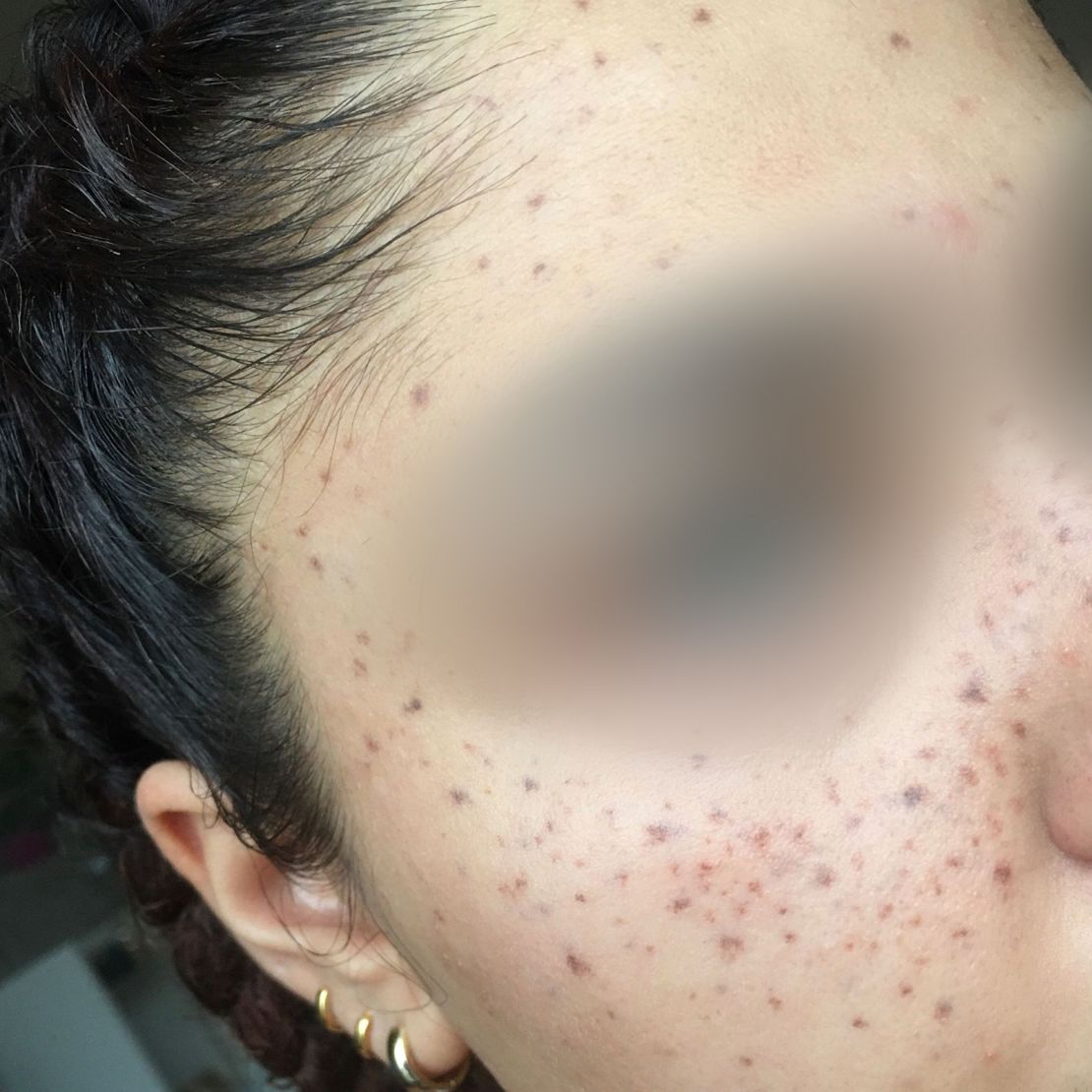
Z got freckle tattoos to restore her natural complexion, but she was unhappy with the results. (This photo has been intentionally blurred by CNN.)
Jordan Butler/JHB Tattoo Removal

Now, they are nearly gone, and she no longer has to wear heavy makeup to conceal the spots. (This photo has been intentionally blurred by CNN.)
Jordan Butler/JHB Tattoo Removal
Cosmetic tattoo ink is meant to eventually fade, but it doesn’t always. It also runs the risk of turning into other colors such as pink or orange over time, or when treated with laser. Z said she did her research and requested regular tattoo ink, but she does not believe her practitioner honored that request. Having more melanated skin put Z at a higher risk of hypopigmentation, a loss of skin pigment, during her tattoo removal.
“There is no guarantee of perfect removal for any skin type, but it does become a little bit tougher on darker skin types,” explained Jordan Butler, founder of JHB Tattoo Removal, who has been treating Z, and sees clients with a range of complexions. “A lot of people that have come in and seen me in the past… have been told that they can’t have (a) tattoo removal, that it’s not possible. It’s definitely possible in most cases.”
Though better laser technology in recent years has improved results and lessened unwanted outcomes such as hypopigmentation, Butler and Goergen emphasized that the outcome does depend on a technician’s knowledge and care. Ink pigment colors are targeted using different wavelengths, and some (like the one that targets warmer shades) are more “aggressive” than others, Goergen explained. “It’s possible to strip natural melanin out of the skin with the red or orange or yellow (inks),” he said.
That’s why patch-testing is crucial, Butler said, which he did extensively with Z. Her first session was painful, she said, but the discomfort has lessened over time — “now it’s barely anything,” she commented — and her healing has been straightforward.
“I think we’re almost there,” Z said of her progress. “It’s so much better than what it was.”
Looking for a fresh start
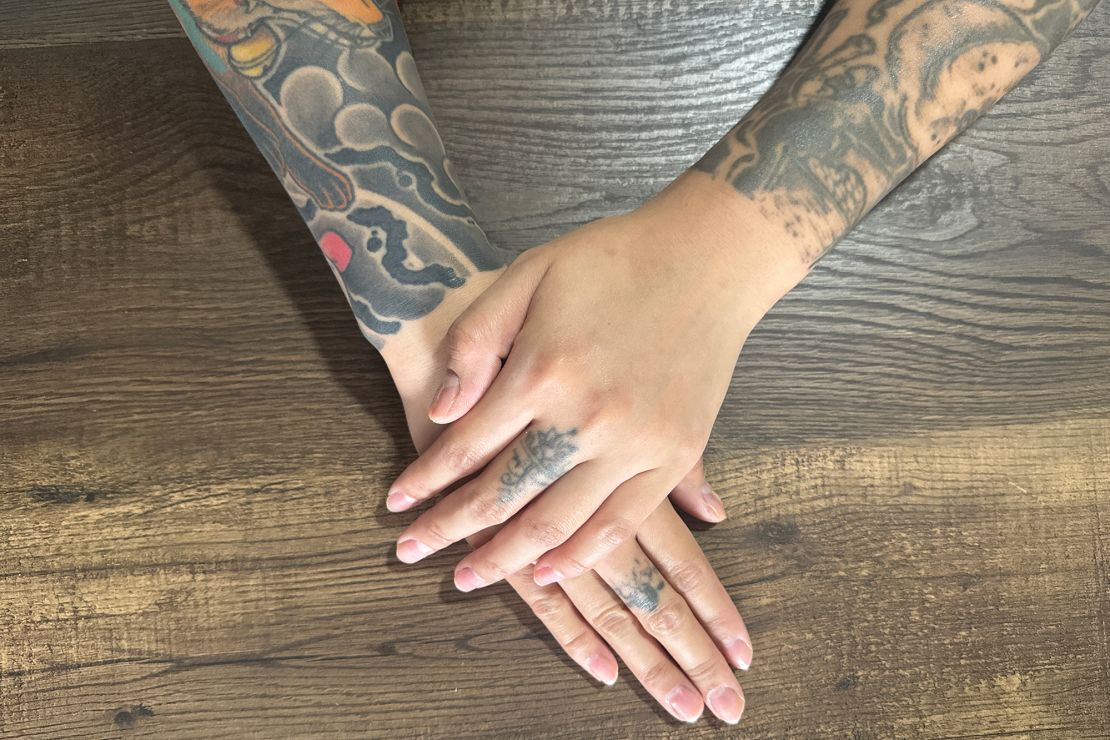
Progress on Jayne's fingers tattoos — the smallest designs she's having removed.
Laura Oliverio/CNN
Jayne Foo, a financial consultant based in Singapore, has experienced the more extreme side of recovery over the past few months as she’s embarked on the removal of around 70% of her tattoos, including one of her two full sleeves, a chest piece and a large stomach piece. And, for her 14,600 followers on Instagram, she’s documenting the entire laborious experience — open wounds, fluids and all. Redness, soreness and swelling are all common; but blistering can occur too, which Foo has experienced after both of her first two sessions.
“I always knew I wanted to get tattoos, but as a young girl, I never had the money to get nice tattoos, so I just plastered anything I wanted on my body without thinking of how it would look in the future,” she told CNN in a phone call. On why she’s getting the tattoos removed now, she said: “I want a fresh start. I want to reclaim my skin.”
That’s the message Foo also hopes to share with her social media followers as she embarks on the yearslong process. She’s not the first influencer to document it — and some have begun partnering with clinics to promote and show results. But videos on social media are often limited to the session itself, which can be deceptive due to “frosting,” which appears to immediately lighten the ink but is actually a temporary effect that occurs briefly (for about 15-20 minutes) when the laser hits the ink,before returning to normal.
Foo’s videos show the hours and days following her treatments, during which she experienced large, intense blistering and extreme itching from the scabbing that followed, the latter for which she was eventually prescribed antihistamines.
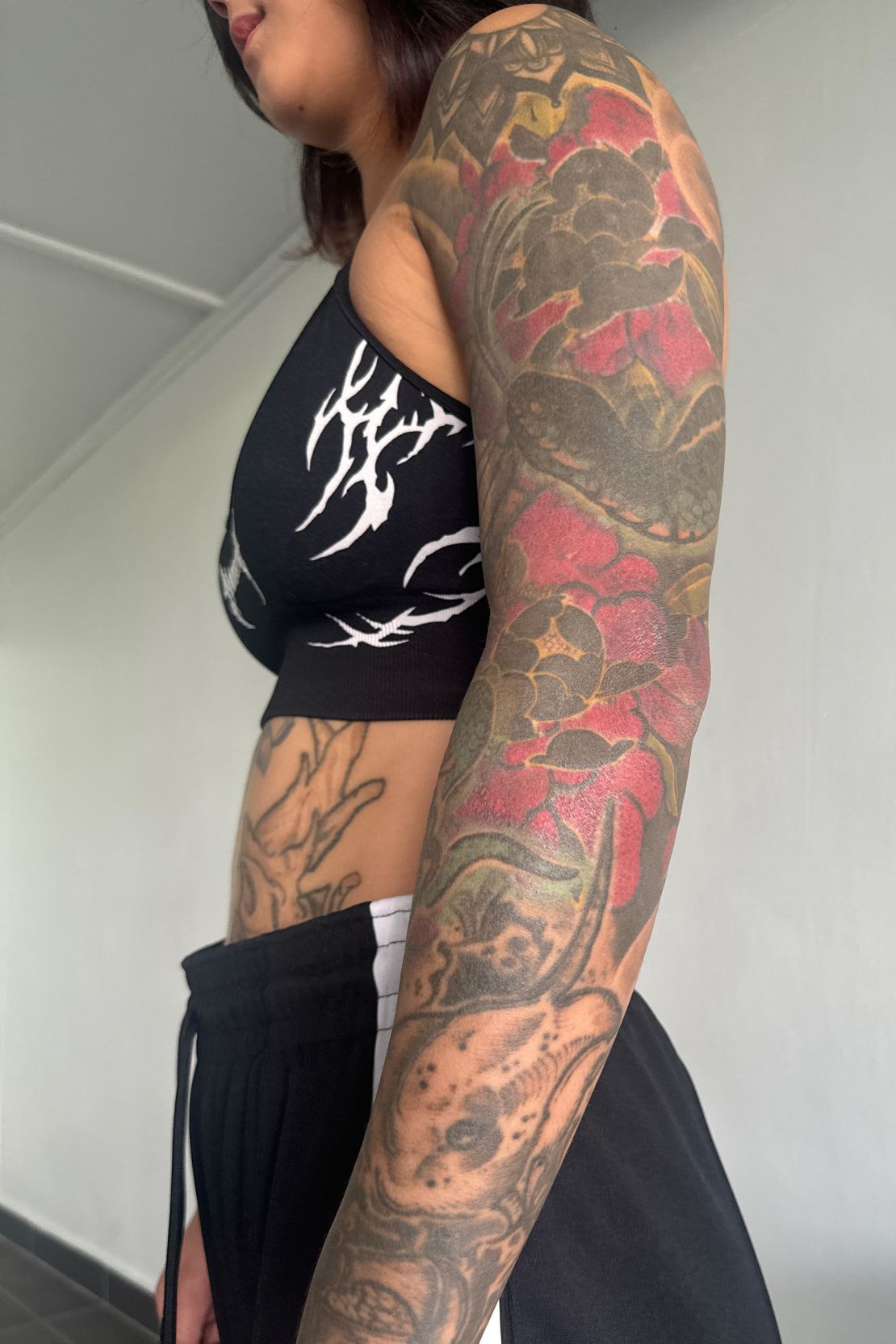
Jayne’s left sleeve was a cover-up of older tattoos. Now, she hopes to get rid of them all.
Laura Oliverio/CNN

A screenshot from Jayne’s Instagram, where she's been documenting each session.
Courtesy Jayne Foo
“The first time I had it done, my arm swelled up twice the size,” she recalled. “I wasn’t expecting that at all.”
For the first few days of healing, she chose to remain indoors completely to minimize contact. “It’s just too much of a hassle to leave the house,” she said. “You have to be very mindful of your surroundings and you have to keep yourself clean.”
Foo said she will continue to chronicle her treatments, as “it’s important to be real about it.” Accustomed to documenting many parts of her life online, including her fitness and travel, she also thought it would be “weird” to “suddenly not have tattoos” in her posts.
Conversely, Gilyard has taken a more discreet route and has kept his removal process mostly private — including from his parents once again. Though, they eventually noticed his faded tattoos.
“My dad finally looked at my tattoos one day and asked why they look like an old man’s,” Gilyard said. “My mother just asked me how much it cost, and asked me how much the tattoos themselves cost, and just said it was all a waste of money,” he laughed. “But I think she’s happy that some are going away.”
